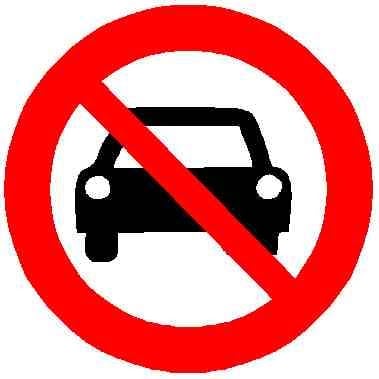Source: The fourth power law
One 18 wheeler does the damage of 10k cars.
Freight rail saves on costs and repairs of roads.
They are comparing a fairly high bicycle+rider weight of 100kg vs a 2000kg car.
A better way to represent the relationship is per mile of trips.
The actual relationship, I think, should be the difference between psi per road contact patch times tires, or at least per tire. On per tire basis times double the tires, a car would wear road 20k times more. Enough for bike to go around the world for each car mile driven.
Don’t post images of text. Just link to the article ffs
According to this math the entire population of the Netherlands has to bike on one single road more than 80 times to create the same amount of damage as one truck…
One truck does the damage of 10,000 cars actually so multiply that times 10,000.
Now look at trucks (18 wheelers) and try to decide if they’re cheaper than trains when factoring in infrastructure maintenance.
A big part of this is about who pays for the infrastructure. In the US at least, most roads are paid for by the public whilst railways are paid for by the company that owns them. To make matters worse, while the cost of making a 13 lane highway is externalized, many states charge taxes per track mile, which incentivizes single-tracking.
Essentially what you end up with is that if you’re sending goods by train, you’re paying for both the maintenance of the train tracks and the roads the trucks use, whereas if you send them by truck you’re only paying for the road maintenance. This is a direct government policy that selects for trucking over rail, despite the inefficiency.
This is why I think large companies with lots of trucking should be paying a lot more taxes for roads and bridges. As it stands now, ordinary citizens are subsidizing them while they turn around and raise prices off the back of this. Corporate welfare for nothing in return
I was an over the road trucker for a bit, and this was one of the first things that struck me. Going through Chicago is a literal river of trucks 24/7. Absolutely no reason 90%+ couldn’t be a train. Just fucking embarrassing really. We let the money management bros into the train system and this is what we get.
It’s not a literal river
Figuratively literal means figuratively. It’s even in the dictionary now, sad to say
Doesn’t the figurative use of literally date back to shakespear? afaik its acceptable so long as its actually attatched to an appropriate metaphor.
I hope you’re right that there’s at least a qualification, but people don’t seem to know that.
I like to think I’m open to new words joining the lexicon, new meanings as society develops but Its still hard to accept this one.
“Literally” is so overused as hyperbole that we’re going to give it the opposite meaning? wtf? Actually, it’s like a swear word and loses its punch when overused. The act of acceptance of the opposite meaning takes away from its use in hyperbole
It’s in a dictionary, not the dictionary. There can be mistakes in a dictionary. It was someone’s judgement call. Dictionaries are not prescriptive and you can’t really use them like that, anyway.
Where bicycles typically ride, it is likely a greater discrepancy.
Unsurprisingly, it’s more complicated than that, but…
-
The literature found a range of damage law exponents from 1 to 12
-
On average, state highways…should consider using a damage law exponent of approximately 2; however, designing for the heaviest commercial vehicles operating on local low-volume roads with a lower life would need to consider a damage law exponent closer to 6.
-
So what would be the difference between a typical sedan and one of the monstrosity truck & SUV things rolling out lately?
Monster truck with the extra big knobby tires? Or regular production monster truck?
Uuuuhhuhhhhh both
I’m going to guess it’s even more since they rounded up the the nearest tenth. An ebike is closer to 0.04 tonnes. A regular bike is closer to 0.02 tonnes. So probably above 300,000.
I’m pretty sure you need to include the people riding the bikes too, since they weigh more than the bikes.
More wheel surface area probably reduces this somewhat. I suspect that it’s the fourth power of the pressure, with the number of axles being used as a proxy for this.
It’s probably still well over four orders of magnitude, mind you.
All while the bus damages the road as bad as a few thousand cars.
Its also only a partial story as “damage done” doesn’t directly relate to actual costs.
Take Ottawa as an example
Transitway is nothing but buses all day long, and that has an amortized annual cost of $42,100 per lane/km/year.
A local road that sees a couple hundred car trips a day costs $14,122 per lane/km/yr.
So that’s 3× the capital cost for way way way more vehicles at 1-3,000x the “damage” per vehicle.
Bicycle lanes an amortized captial cost of around $5-1000 per lane/km/year (this number is REALLY hard to peg down due to all the different ways cities account for bike infrastructure and the type of infrastructure it is).
So a bike lane is somewhere between 14 to 3000x less expensive than a local road, despite 160,000x less “damage”

Yes, but it’s pointing out that maybe fixating on a singular metric could backfire.




